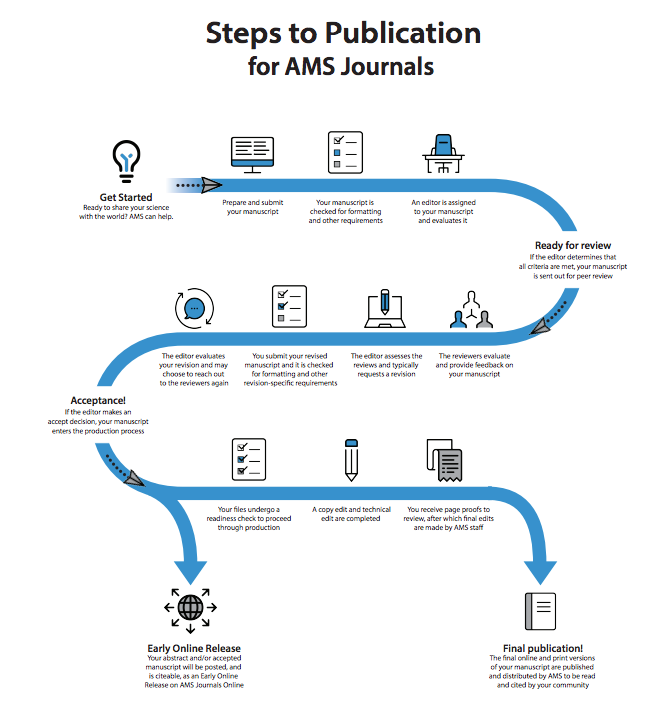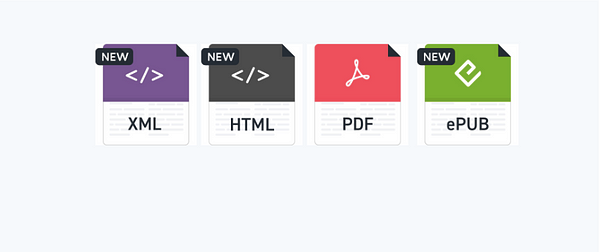
Respected scholars submit to good journals, but a journal does not get tagged ‘good’ unless respected scholars submit to it. Editors at all scholarly journals face this catch-22 situation.
Attracting high-quality submissions is particularly difficult for new journals. With every academic field dotted with journals and more being added by the day, the competition for a small pool of well-written articles is fierce. If you are looking to grow your journal and increase its reach then you will need to sink your teeth into this competition and give it your all. In this article, I’ll share with you ten things you need to do if want to maximize your chances of getting noticed by and attracting submissions from top scholars.
The Secret Formula
The secret to getting quality submissions is two-fold.
Increase Visibility + Build Trust = More High-Quality Submissions
The more people your journal reaches and the more reliable and trustworthy your journal looks, the higher your chances of getting eminent researchers and scholars to write for you.
Of the ten steps outlined below, some will help you with increasing your journal’s visibility and others will help build trust.
I. Build A Strong Editorial Board

Right off the bat, this is the most important factor that will decide the kind of submissions you attract and this is what I’ll focus on the most.
As soon as you decide to start your journal and define its scope — which should ideally fill a void that journals in your field don’t already address — the next step should be recruiting renowned scholars as members of the editorial board. You can start off with tenured faculty within your own institution and ask them to refer other colleagues or scholars in their network.
Another way is to reach out to scholars directly via email. This may seem a little scary, but trust me that most people are nice and the worst-case scenario is that they will say no. But the possibility of getting a yes and getting a top scholar on board is fantastic and far outweighs any negative outcome you can imagine from this kind of cold outreach.
There was a fantastic answer on StackExchange for how to build an editorial board. It does not tell you how, really, but it covers some basics that a lot of people who start new journals ignore. Here’s a relevant snippet:
Recruiting a strong initial editorial board for a new journal is not easy. There are several important criteria:
1. You need editors with strong reputations, to attract attention to the journal and inspire confidence that it will be well run.
2. You need to assemble a group that is diverse enough to cover the full range of submissions within the journal’s area of coverage.
3. You need editors who have enough time and energy to do a good job. Keep in mind that most of the good candidates are already overcommitted.
4. You need editors who are committed to the success of the journal and who are eager to inform the community about it and solicit submissions.
Ideally, you have a great idea for a journal that fills a troubling gap in the publishing landscape, and prominent people you mention it to say “What a wonderful idea! How can I help?” If that’s the case, then you will still have to make wise choices and put in a lot of hard work, but your chances of success are reasonable. On the other hand, if you have to convince people to join the board, or to restrict your attention to people who are eager to join any editorial board that will take them, then you’ll have a much more difficult time.
If you have a strong editorial board it builds confidence in the journal and is a mark of trust and authenticity. Most quality authors will peruse the editorial board before they think of sending in their submission to a fledgling journal.
II. Create A Comprehensive Website

Creating a good, comprehensive website for their journal is generally an afterthought for many publishers, which is unfortunate because a website is crucial if you are building an online journal.
There are several DIY tools available online today that help you build professional looking websites in a few hours at a fraction of the cost of hiring a development team to do it for you. (Read this blog post for more inexpensive publishing tools: Tools for STM Publishers: Running an Open Access journal on a shoestring budget)
When potential authors land on your journal’s website here’s what they expect to see (at the very least):
- Editorial board
- Your mission and vision
- The scope of your journal
- Instructions for authors
- Your open access policy, if any
- Article processing charges, if any
- Your peer review process
A complete website, quite like the editorial board, is also a mark in your favor and builds trust.
III. Get Indexed

Submit your journal to different academic indices and databases. The idea is to do everything possible to ensure that any content published in your journal garners maximum visibility.
Most popular indices have strict criteria on what kind of journals they will accept. The most common of these is that the journal should have been live for at least two years with a regular publishing schedule. The not-so-popular indices and databases may be easier to get into. Read this blog post for more information on the different kinds of indices and how to get indexed in them: Get Indexed: List of Prominent Indices for Academic Journals.
Getting indexed in popular indices like DOAJ and PubMed can do wonders for the reach and popularity of your journal. This also directly affects the number and quality of submissions your journal receives. Read my blog posts on how to get indexed in PubMed and DOAJ — if you meet their criteria, you are golden.
IV. Solicit submissions from leading scholars

Similar to the cold outreach you did for building the editorial board, this step requires you to reach out to eminent scholars via email inviting them to submit to your journal.
Again, impressions matter here — a strong editorial board, good website, clear instructions will greatly increase the results of an outreach campaign of this kind. Most researchers are wary of receiving cold emails because of the number of predatory journals, give them reason to trust your journal.
Ideally, if you can get someone from your editorial board or the peer-review network you’ve built for an introduction, you’ll have better luck.
V. Have A Straightforward And Reliable Editorial Process
Have clear author instructions and follow-through on them.
When authors do submit to your journal, make the process painless and transparent. Be quick to give feedback and share decisions taken.
Unlike popular journals that can get away with having authors wait around for months on end for a decision about their article, a fledgeling journal cannot.
Be genuine, build a strong peer review network, keep following up in a timely manner and stick to a schedule. This will make authors likelier to keep coming back and for word to spread about the professionalism of your journal’s editorial team.
Many journals are upfront about their editorial process and may share timelines as well. This is publication process for American Metereological Society (AMS) journals:

VI. Identify And Invite Promising Scholars

Leading scholars are way too overcommitted, and while it’d be great to have one of them submit to your journal, you’d have better luck soliciting submissions from other promising scholars who may not be so high up the pecking order.
One of the ways to find promising scholars is to subscribe to the feed of your competitors and peruse it regularly. If you are the only one managing the journal, of course, the onus is on you. But, if you have an editorial team, you could divide the work. Keeping tabs on the content your competitor posts will not only help you identify good authors you could approach for submissions to your journal but also helps you stay updated about interesting topics and trends in your field that you could cover in upcoming issues.
VII. Do PR

Public Relations (PR) is something journals think doesn’t apply to them. But, it can be very effective and help you grab lots of eyeballs pretty fast.
If you sign up a top scholar to be a part of your editorial board, this is news that can garner good traction and do wonders for your journal’s reputation. If you’ve run a good article that has some really groundbreaking finding — that is newsworthy as well. If a research published in your journal would be of general public interest, that is another PR opportunity you should explore.
Here are a couple of examples of PR done by or for journals:
For a general interest study published in the Journal of Clinical Endocrinology and Metabolism: https://www.afr.com/life-and-luxury/health-and-wellness/new-research-reveals-the-best-time-to-exercise-to-burn-more-fat-20191023-p533a4
For research published in the journal Traffic: https://www.sciencedaily.com/releases/2019/10/191023135915.htm
VIII. Attend Conferences

Conferences are another great place to find good authors and trending topics, network with the scholarly community, and to promote your journal. All of this will find its way back to how many submissions you receive.
It is very easy to find out about upcoming conferences. While your institute should advertise (and, maybe, sponsor) some, you can also find listings online.
Here are a couple of links to help you find conferences in your vicinity:

IX. Market Your Journal
Again a point that most editors tend to overlook. I had written a pretty exhaustive article on how you can market and grow your journal. Read the entire blog post here: How to Increase Journal Readership: The Complete Checklist.
To be honest, after all the effort you put into setting up a journal if you do not market it, all that hard work will go down the drain. Read that blog!
X. Publish In Multiple Formats

I’ve kept this point at the end, but it is no less important than any of the other ways of attracting high-quality submission. Most publishers know that they need HTML, but there are other formats that are just as important. These include JATS XML, ePUB and PDF. The latter two are necessary for reading on mobile and desktop respectively. JATS XML, on the other hand, is necessary for machine consumption. Yes, you heard that right.
Almost all editors in the scholarly publishing industry have heard of JATS XML, though not many know it’s what, why and how.
Publishing a JATS XML version of your journal’s content has many benefits, but perhaps the most significant one to the topic on hand is that it makes content machine-readable. This means that search engines like Google, Google Scholar, and Microsoft Academic can read your content and show it up on search results — a powerful way to increase your journal’s reach and subsequently attract more submissions.
Read all about JATS XML, its benefits and how to generate it in this blog post: JATS XML: Everything a Publisher Needs to Know.
SciSpace (Formerly Typeset) is a software built to make publication workflows more efficient. Publishers use SciSpace to automatically convert author submissions to any publication format, including JATS XML, HTML, PDF, ePUB, etc. Learn how you can improve your workflow and save over 80% of your production cost and time. Explore SciSpace for Publishers.
In view of your interest in simplifying research workflows, we suggest you take a look at SciSpace discover. The portal lets you perform all your research writing, including literature searches, in one place.

SciSpace provides researchers, universities, and publishers with all the tools they need. Our comprehensive research repository features more than 200 million research papers from multiple disciplines with SEO-optimized abstracts, a publicly visible profile to highlight your expertise, a specially-built collaborative text editor, 20,000+ journal templates, and more.

Before you go
Appendix:
If you found the above article interesting, the following blogs might also interest you.








